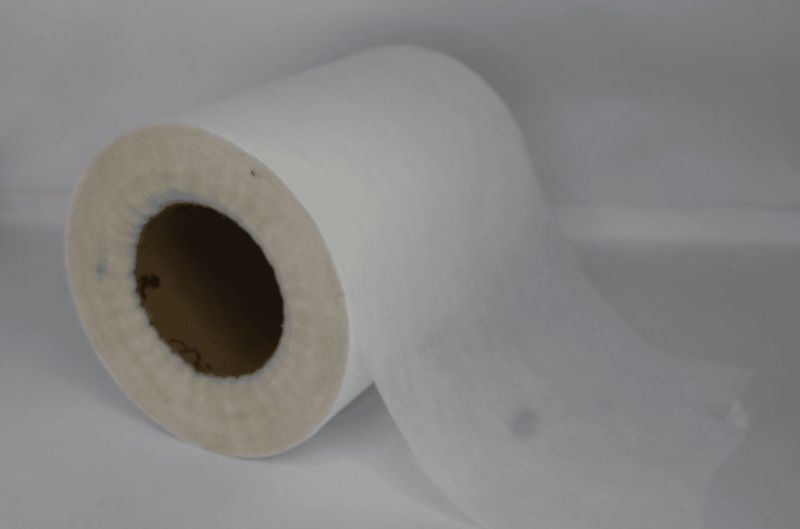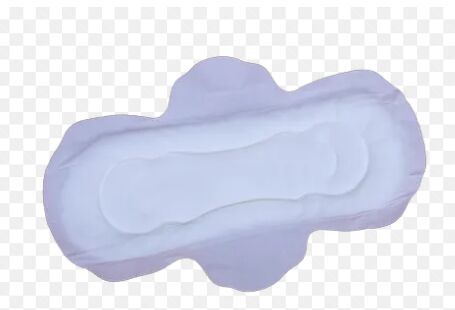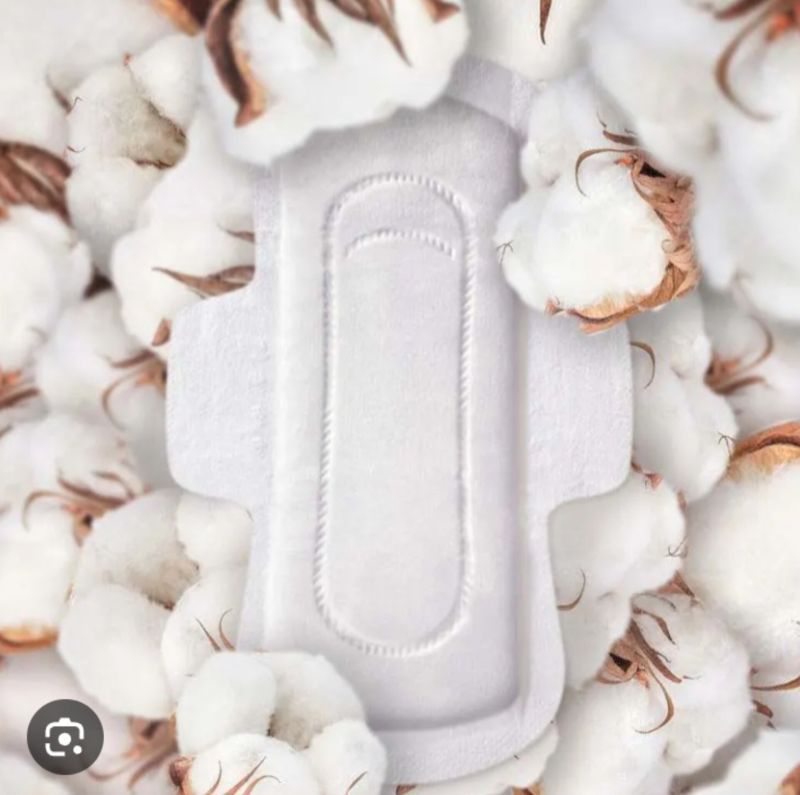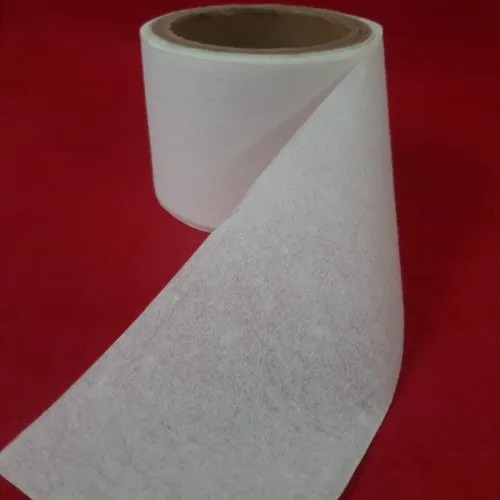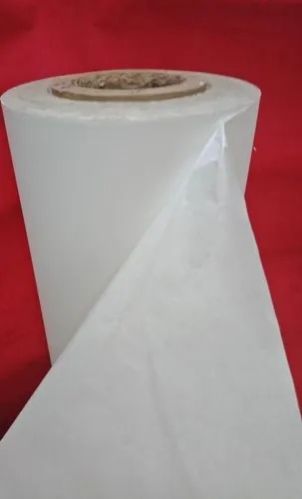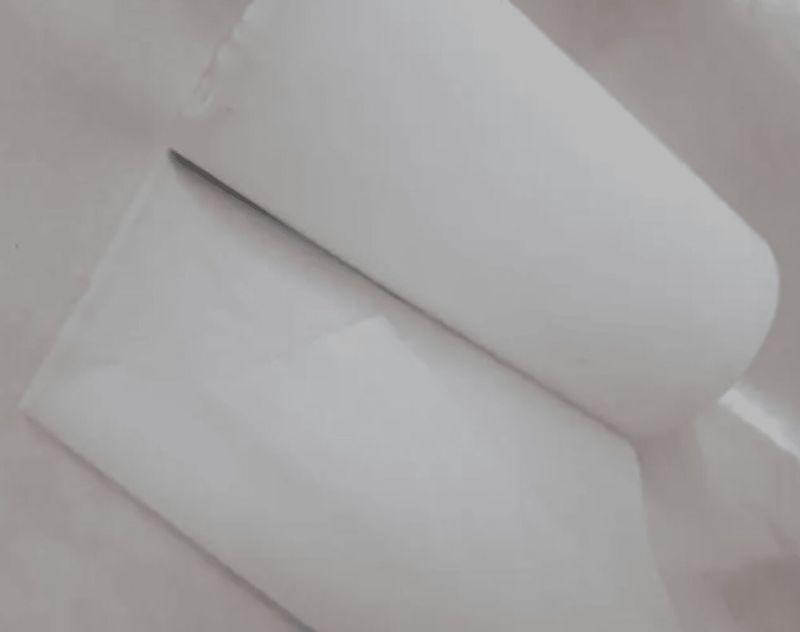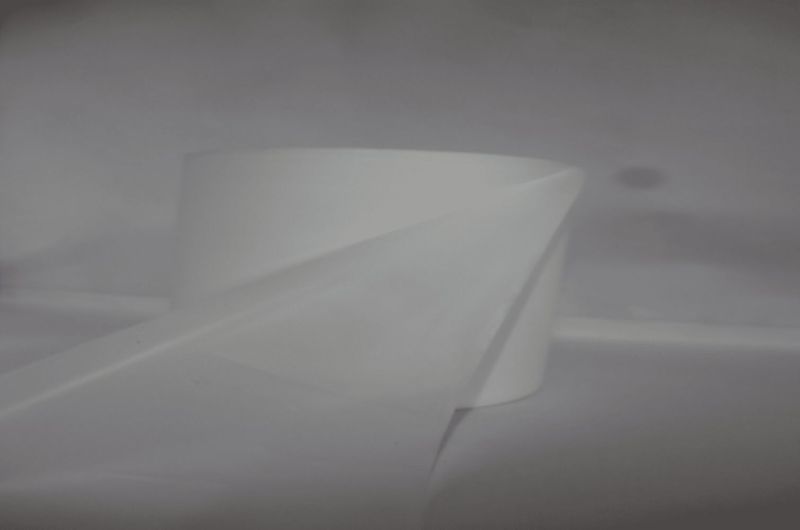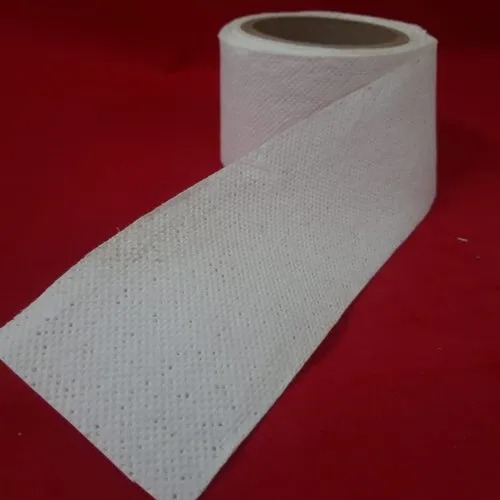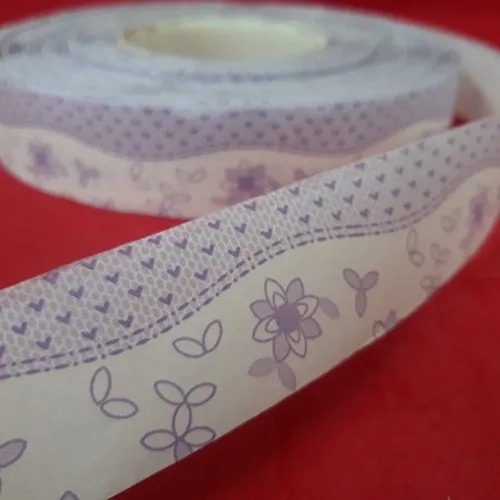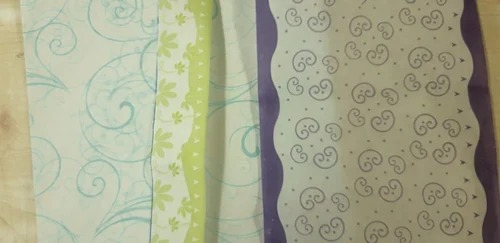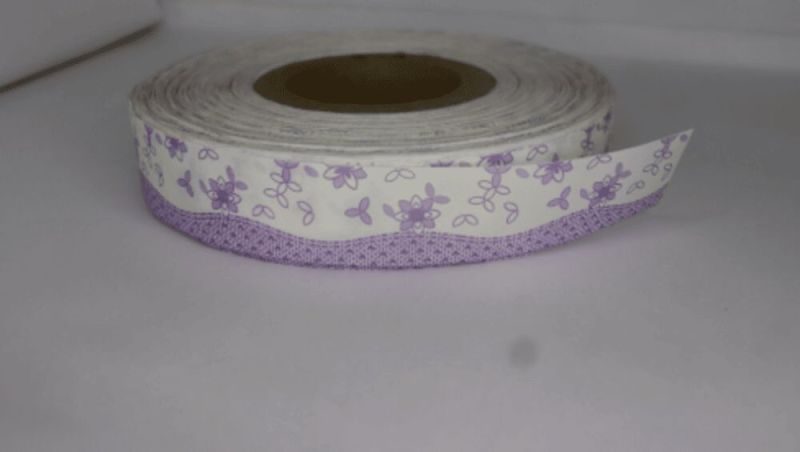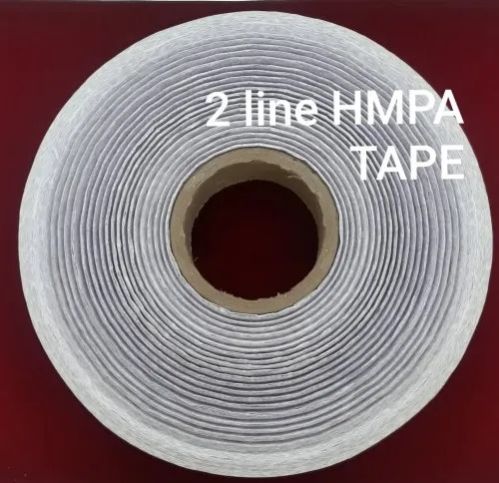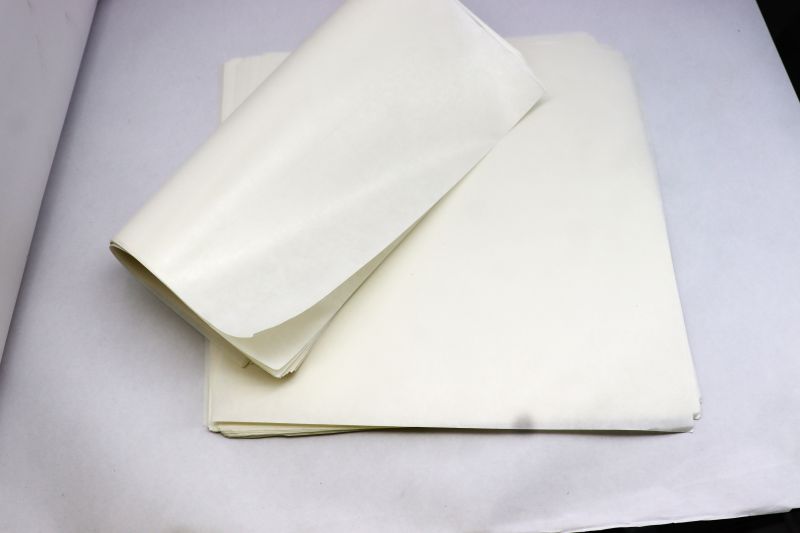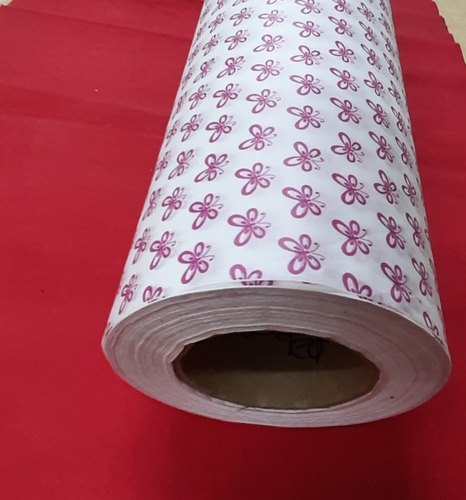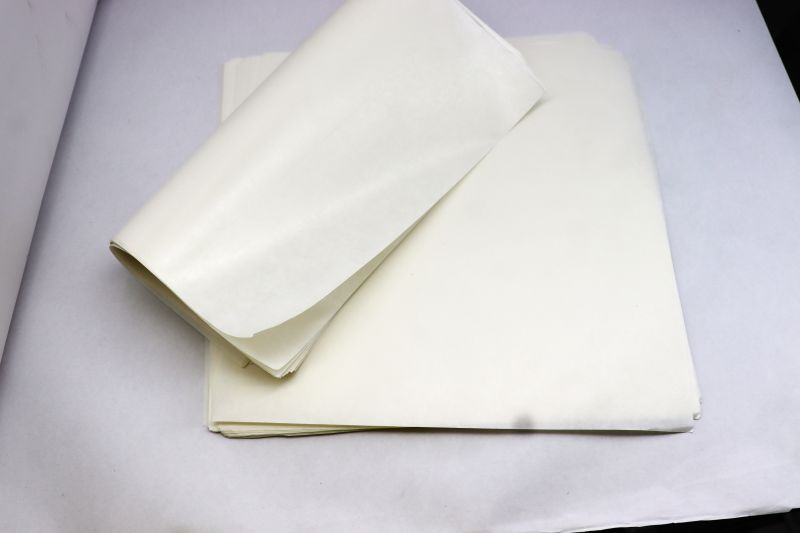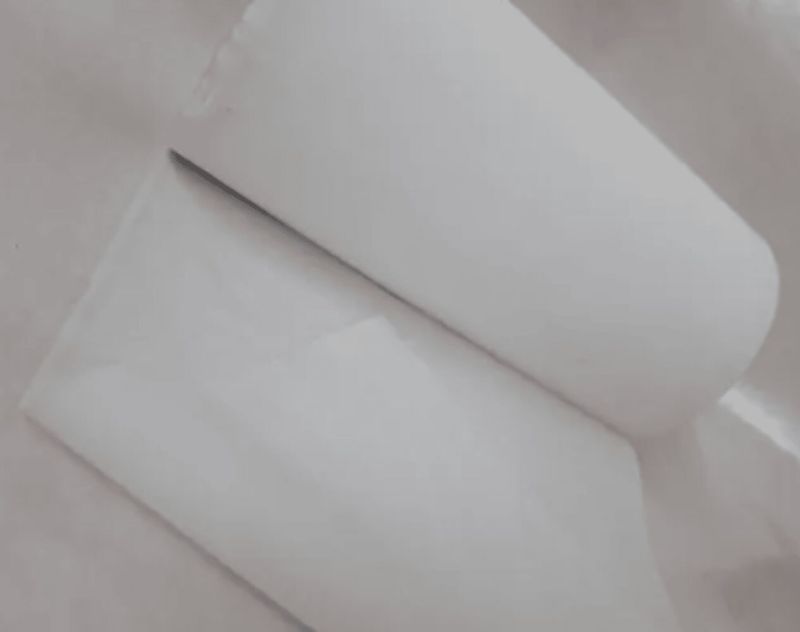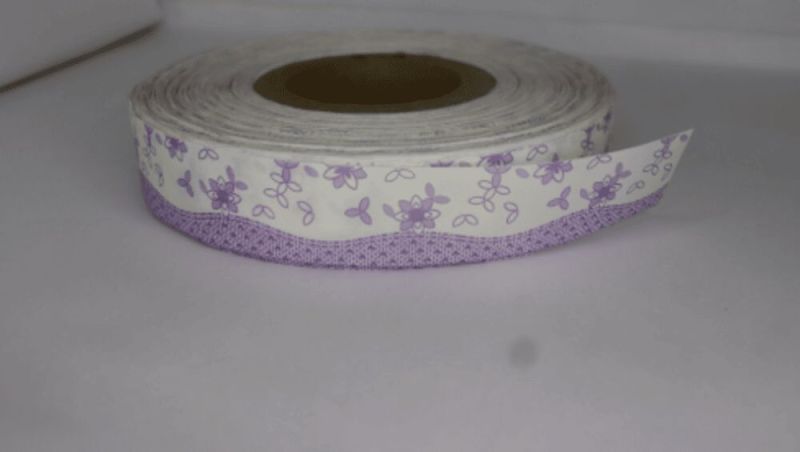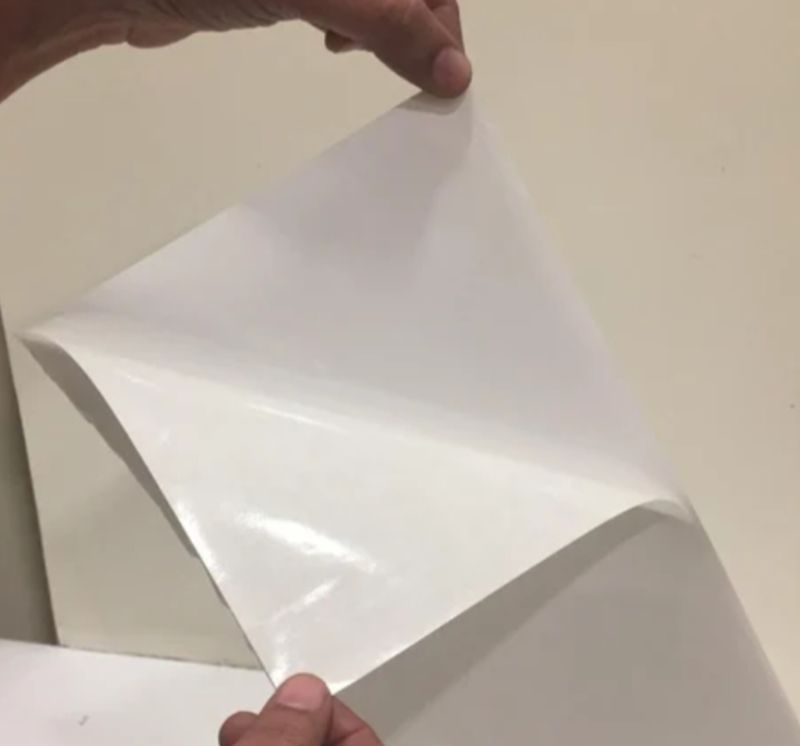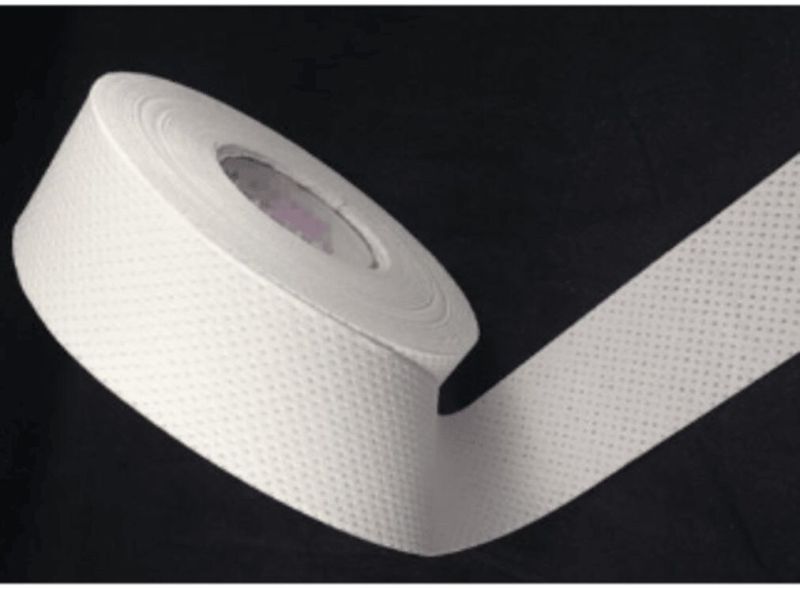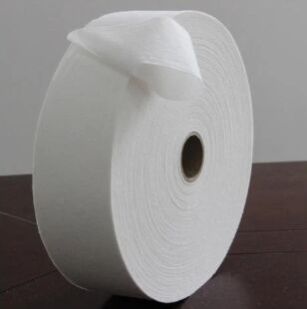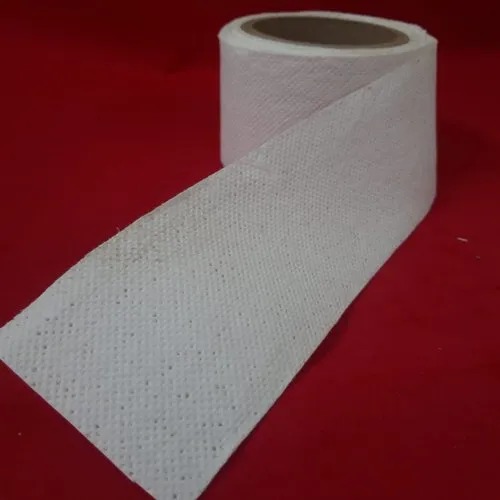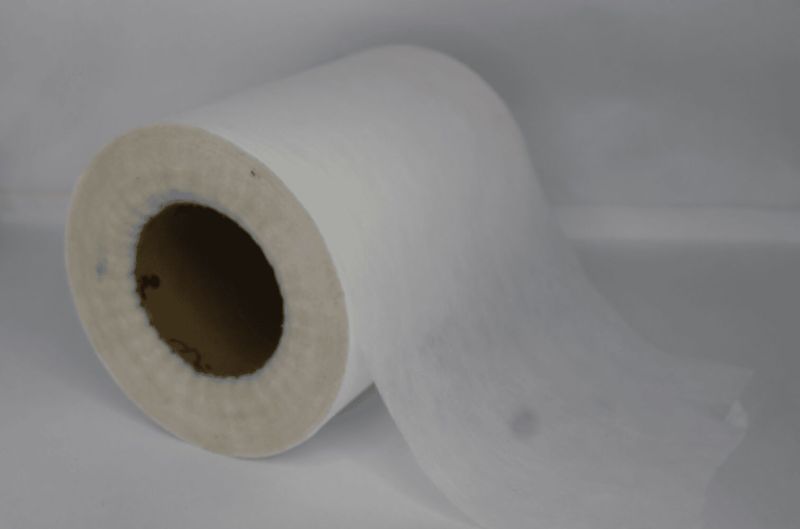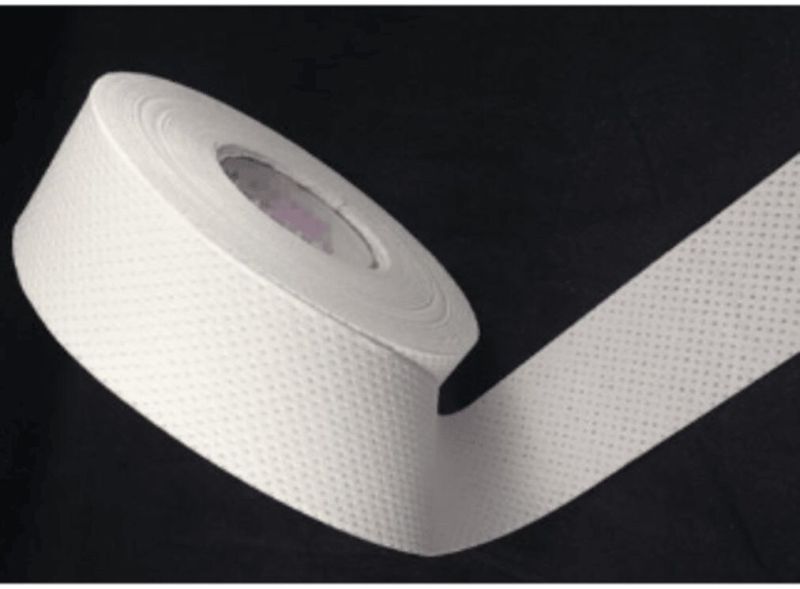Mahim, Mumbai, Maharashtra
- GST NO. : 27ADXPN7508A1ZA
Sanitary Napkin Papers
Leading Manufacturers, Exporters, Wholesaler, Retailer and Trader of Drynet White 180mm TL, Hydrophobic Nonowoven 180mm BL, Medical Grade Pe White Back Layer, Nonoven Pe Full Gum Back Release Paper, Release Coated Paper Your Logo, Sanitary Napkin Back Wood Pulp Paper Roll, sanitary napkin release hmpa nonoven paper, Sanitary Napkin Sap Gel Sheet Roll and Sap Gel Sheet Roll from Mumbai.
| Business Type | Manufacturer, Supplier |
| Brand Name | RK |
| Material | Cotton,S-8ws |
| Finishing | Smooth |
| Shape | Round |
| Color | White |
| Surface Treatment | NA |
| Usage | Personal USe,Sticker |
| Size | 8X8 Feet,180mm |
| Country of Origin | India |
| Diameter | 61 R.mtr per kg |
| GSM | Less than 80 |
| Port | NA |
| Delivery Time | 5 DAYS |
| Packaging Details | ROLL OFF |
Preferred Buyer From
| Location | Worldwide |
The Drynet White 180mm TL is a specialized netting solution designed for aquaculture applications, particularly in tuna farming. Its primary function is to reduce biofouling growth, thereby enhancing water flow and maintaining optimal conditions within sea cages.
Key Features:
-
Material Composition: Constructed from high-quality materials, the Drynet White 180mm TL is engineered to withstand harsh marine environments, ensuring durability and longevity.
-
Mesh Size: With a mesh diameter of 180mm, it effectively balances water flow and prevents the ingress of unwanted marine life.
-
Color: The white coloration of the netting has been observed to influence biofouling growth, with studies indicating varying impacts based on net color.
Specifications:
-
Dimensions: The netting is available in various sizes to accommodate different cage dimensions and farming requirements.
-
Strength and Durability: Engineered to endure the physical demands of aquaculture environments, the netting offers robust performance over extended periods.
-
Maintenance: Designed for ease of cleaning, the netting facilitates regular maintenance routines, ensuring sustained performance and longevity.
For detailed specifications and purchasing information, it is recommended to contact the manufacturer or authorized distributors directly.
| Business Type | Manufacturer, Supplier |
| Brand Name | RK |
| Material | Paper |
| Frame Material | Na |
| Lenses Material | NA |
| Shape | Round |
| Color | White |
| Condition | New |
| Application | For Sanitary Pad Manufacture |
| Feature | Comfortable,Eco Friendly,Light Weight |
| Type | Sanitary Napkin Facial Tissue Paper Roll |
| Country of Origin | India |
| Pattern | Plain |
| Texture | Soft |
| Port | NA |
| Delivery Time | 5 DAYS |
| Packaging Details | ROll OFF |
Preferred Buyer From
| Location | Worldwide |
Hydrophobic nonwoven fabrics are engineered to repel water, making them ideal for applications requiring moisture resistance. These fabrics are commonly used in hygiene products, medical supplies, agriculture, and various industrial sectors.
Description:
Hydrophobic nonwoven fabrics are typically made from 100% polypropylene (PP) through a spunbonded process. This manufacturing method results in a fabric that is lightweight, breathable, and exhibits excellent water-repellent properties. The fabric's hydrophobic nature ensures that it resists water penetration, making it suitable for applications where moisture resistance is essential.
Specifications:
- Material: 100% Polypropylene (PP)
- Technics: Spunbonded
- Weight: Typically ranges from 10 to 70 grams per square meter (gsm)
- Width: Available in various widths, including 180mm, 190mm, and up to 3.2 meters
- Color: Custom colors are available upon request
- Features:
- Waterproof
- Breathable
- Soft and lightweight
- Non-toxic and eco-friendly
- Antibacterial properties
- High tensile strength and elongation
- UV resistance
Applications:
Hydrophobic nonwoven fabrics are utilized in various industries, including:
- Hygiene Products: Used in baby diapers, adult diapers, sanitary napkins, and other personal care items.
Hydrophobic nonwoven fabrics are engineered to repel water, making them ideal for applications requiring moisture resistance. These fabrics are commonly used in hygiene products, medical supplies, agriculture, and various industrial sectors.
Description:
Hydrophobic nonwoven fabrics are typically made from 100% polypropylene (PP) through a spunbonded process. This manufacturing method results in a fabric that is lightweight, breathable, and exhibits excellent water-repellent properties. The fabric's hydrophobic nature ensures that it resists water penetration, making it suitable for applications where moisture resistance is essential.
Specifications:
- Material: 100% Polypropylene (PP)
- Technics: Spunbonded
- Weight: Typically ranges from 10 to 70 grams per square meter (gsm)
- Width: Available in various widths, including 180mm, 190mm, and up to 3.2 meters
- Color: Custom colors are available upon request
- Features:
- Waterproof
- Breathable
| Business Type | Manufacturer, Supplier |
| Type | Ancona |
| Gender | Female |
| Age | 6 Months |
| Color | White |
| Weight | 500-1000 Gm |
| Country of Origin | India |
| Topsheet | Drynet |
| Size | XL |
| Brand Name | Amicare |
| Product Code | A6 |
| Port | Transport |
| Delivery Time | one week |
| Packaging Details | Customised Packaging |
Preferred Buyer From
| Location | Worldwide |
Medical Grade PE White Back Layer: Description and Specifications
A Medical Grade PE (Polyethylene) White Back Layer is a specialized material used in various medical applications, particularly in wound care, dressings, medical packaging, and as a protective layer in medical devices. The material offers several features that make it ideal for use in medical environments where cleanliness, protection, and comfort are essential.
Description:- Material: Polyethylene (PE), a durable, flexible thermoplastic polymer that is widely used in medical devices and packaging due to its chemical resistance, biocompatibility, and low moisture absorption.
- Color: White, which is typically preferred in medical settings for cleanliness and the ability to clearly view any signs of contamination.
- Back Layer Function: The white back layer typically serves as a protective outer layer in various medical products, offering a barrier to external contaminants while providing a smooth surface for patient contact.
-
Material Type:
- Polyethylene (PE), medical-grade with appropriate certifications (such as ISO 10993 for biocompatibility).
-
Thickness:
- Typically ranges from 0.03 mm to 0.10 mm, depending on the application. For example, thinner layers are often used for medical dressings, while thicker versions may be used in protective packaging.
-
Tensile Strength:
- The material has a high tensile strength, providing durability without compromising flexibility.
-
Elasticity/Flexibility:
- PE is highly flexible, making it suitable for products that need to conform to body contours or be used in products that require movement.
-
Biocompatibility:
- Medical-grade PE is non-reactive with human skin and tissues, ensuring it can be safely used in direct contact with patients, particularly in dressings, bandages, or surgical kits.
-
Water Resistance:
- Polyethylene is water-resistant, providing an effective barrier against moisture, which is crucial in many medical applications.
-
Barrier Properties:
- Acts as a physical barrier to bacteria and external contaminants, preventing contamination in medical products.
-
Temperature Resistance:
- PE can withstand a wide range of temperatures, making it suitable for both sterilization and medical storage conditions.
-
Opacity/Transparency:
- Generally, PE used in medical products is opaque or slightly translucent, which is suitable for visibility during medical inspections without compromising sterility.
-
Sterilization Compatibility:
- Can typically be sterilized using methods like gamma radiation, ethylene oxide (EO) gas, or steam (depending on the product design and thickness).
-
Durability and Strength:
- PE offers high durability while remaining lightweight, contributing to the overall strength and functionality of the final medical product.
-
Applications:
- Medical Packaging: Packaging for sterile medical instruments and devices.
- Wound Care: Protective layer in wound dressings.
- Surgical Applications: Used in surgical drapes and gowns as a protective layer.
- Sterile Barrier Systems: Common in sterile packaging for pharmaceuticals or medical kits.
- Safety: Prevents contamination by offering a barrier to pathogens and moisture.
- Comfort: The flexibility and softness provide comfort in medical dressings.
- Reliability: Medical-grade PE maintains its integrity under various environmental conditions, ensuring performance.
- Ease of Use: Its pliability and low weight make it easy to incorporate into medical applications.
Medical Grade PE White Back Layers are versatile, durable, and reliable materials used in a wide variety of medical products, providing essential protection while maintaining patient safety and comfort.
| Business Type | Manufacturer, Supplier |
| Brand Name | Amicare |
| Usage | For Sanitary Pad Manufacture |
| Size | Customised |
| Type | Roll / sheet form |
| Material | Cotton |
| Shape | Folded, Winged, Wingless |
| Style | Disposable |
| Feature | Breathable, Fan-Shape, Odor Control |
| Country of Origin | India |
| Delivery Time | 5 DAYS |
| Packaging Details | Roll OF |
Preferred Buyer From
| Location | Worldwide |
Nonwoven PE Full Gum Back Release Paper is a specialized material commonly used in the production of sanitary napkins and other hygiene products. It serves as a protective layer, facilitating the easy application and removal of adhesives during manufacturing.
Specifications:
-
Material Composition: The paper typically consists of a nonwoven fabric laminated with polyethylene (PE) film. This combination provides a balance of strength, flexibility, and moisture resistance.
-
GSM (Grams per Square Meter): The weight of the paper can vary, with common specifications including 39 GSM. This measurement indicates the density of the paper, affecting its durability and handling properties.
-
Additionally, RK Enterprise provides a Release Paper Zig Zag Line Gum Adhesive Cover Release Paper, suitable for nonwoven hydrophobic back sheets, commonly used in sanitary napkin production.
These products exemplify the versatility and customization available in nonwoven PE full gum back release papers, catering to various requirements in the hygiene product manufacturing industry.
| Business Type | Manufacturer, Supplier |
| Brand Name | Amicare |
| Material | PP,na |
| Pulp Material | PAPER |
| Color | Off White,White |
| Design Printing | Printed |
| Application | For Sanitary Pad Manufacture |
| Feature | Eco-friendly, Flame Retardant, Good Quality, High Tensile Strength, Light Weight, Perfect Finish |
| Pattern | Plain, Printed |
| Type | Non Woven Roll |
| Country of Origin | India |
| Condition | New |
| Delivery Time | 5 DAYS |
| Packaging Details | Roll OFF |
Preferred Buyer From
| Location | Worldwide |
To assist with creating a detailed "Release Coated Paper Your Logo Specification Description," I would need a bit more information to tailor it to your specific needs. Generally, a specification description includes the following points:
-
Paper Type:
- Coated paper typically has a smooth finish, which can be glossy, satin, or matte.
- The purpose of the coating is to improve print quality and make colors more vibrant.
-
Paper Weight:
- The weight is usually given in grams per square meter (gsm), such as 80 gsm, 100 gsm, 150 gsm, or heavier weights.
- Depending on the application, the paper could be lightweight for flyers or heavier for business cards, brochures, etc.
-
Coating Type:
- Glossy: High shine, enhances color vibrancy.
- Satin: Semi-gloss, provides a subtle shine with a more natural feel.
- Matte: No shine, suitable for premium, sophisticated finishes.
-
Surface Finish:
- Smooth or Textured: Whether the paper has a smooth texture or a more natural, textured feel.
-
Print Specifications:
- Full color or black and white.
- Specific dimensions (e.g., A4, A5, custom size).
- Ink requirements (e.g., CMYK for full color, Pantone colors).
-
Logo Placement:
- Description of where and how your logo will appear on the paper (e.g., centered, top left, or full-page watermark).
- Specify the color and size of the logo to match the overall design.
-
Usage:
- Intended use for the coated paper (brochures, business cards, packaging, etc.).
-
Environmental Considerations:
- Eco-friendly coatings, recycled paper options, etc.
-
Additional Features:
- Special finishes (embossing, debossing, foil stamping).
- Custom options for paper texture or color.
| Business Type | Manufacturer, Supplier |
| Brand Name | RK |
| Material | Wood Pulp,Cotton |
| Raw Material | yes |
| Pulp Material | PAPER |
| Shape | Folded, Winged, Wingless |
| Color | White |
| Certification | ISO 9001:2008 |
| Type | Roll / Sheet Form |
| Country of Origin | India |
| Feature | Skin Friendly |
| Size | Customised |
| Style | Disposable |
| Port | NA |
| Delivery Time | 5 DAYS |
| Packaging Details | ROLL OFF |
Preferred Buyer From
| Location | Worldwide |
Sanitary napkin back wood pulp paper roll is a key material used in the production of sanitary napkins or pads. It is used primarily as a backing layer that prevents leakage while ensuring comfort. Here's a general specification and description of the material:
Specification:-
Material Composition:
- Made primarily from wood pulp, which is derived from natural wood fibers. It is typically bleached to ensure cleanliness and a light color, contributing to hygiene.
- The wood pulp used is often processed into fluff pulp, which is highly absorbent, lightweight, and soft.
-
Roll Size:
- Width: Typically ranges from 20 cm to 100 cm or more, depending on the manufacturer’s specifications.
- Length: Can range from 500 meters to several kilometers, depending on the production needs.
- The paper is rolled in a continuous sheet form to facilitate easier processing during manufacturing.
-
Thickness:
- Varies but is generally 0.2mm to 0.5mm thick, depending on the intended end-use.
- Thickness can affect both the comfort and strength of the napkin.
-
Weight:
- Usually weighs 70-200 grams per square meter (gsm), depending on the desired absorbency and strength.
-
Absorbency:
- The pulp is highly absorbent, contributing to the sanitary napkin’s ability to hold fluid and keep the user dry.
-
Color:
- It is typically white, as it’s bleached during the production process to maintain hygiene and ensure there are no colorants that could irritate sensitive skin.
-
Pore Structure:
- The paper roll is designed with a porous structure to ensure fluid retention, and it may have enhanced absorbency to keep the napkin dry and leak-proof.
-
Softness:
- The back pulp paper should be soft to the touch, as it makes up the side that comes in contact with the user's skin.
-
Strength:
- Should have enough tensile strength to prevent tearing during use. Typically, this paper should be strong enough to maintain the napkin’s structural integrity, even when it is wet.
-
Other Treatments:
- Coating: Sometimes, a polymer coating or hydrophobic treatment is applied to the wood pulp paper to prevent liquid from passing through. This enhances the leak-proof quality of the sanitary napkin.
- Antimicrobial Treatment: Some manufacturers apply antimicrobial agents to the paper to reduce bacteria growth.
Sanitary napkin back wood pulp paper rolls serve as a base layer in sanitary pads, positioned between the absorbent core (usually a combination of absorbent fluff pulp and superabsorbent polymers) and the outer layers (often made from nonwoven fabric). This back layer plays a crucial role in providing leakage protection and keeping moisture from leaking onto clothing or bedding.
- The porous nature of the wood pulp allows it to trap liquids, while the hydrophobic coatings prevent leakage from the back of the napkin.
- The fluff pulp used is typically processed to enhance its absorbent capacity and softness, ensuring that the product remains comfortable while still offering high absorbency.
- This material is designed for high-volume, continuous production to ensure consistency in every napkin and to improve cost-efficiency for large-scale sanitary napkin manufacturers.
- Sanitary Napkins/Pads: As a back sheet for protection against leaks.
- Diapers: Used as a part of the back layer in disposable baby diapers.
- Incontinence Products: Used in pads and liners designed for adult incontinence.
The key to a successful sanitary napkin back wood pulp paper roll lies in achieving the right balance between absorbency, comfort, and leakage protection, making this an essential component of sanitary product manufacturing.
| Business Type | Manufacturer, Supplier |
| Brand Name | Amicare |
| Material | Cotton, Pe |
| Color | White |
| Size | L, M, XL |
| Feature | Durable,Heat Resistant,Holographic,Waterproof |
| Packaging Type | Packet |
| Type | Adhesive Tape Roll |
| Country of Origin | India |
| Application | For sanitary pad manufacture |
| Adhesive | Acrylic Based |
| Adhesive Side | Single Sided |
| Design Printing | Plain |
| Port | NA |
| Delivery Time | 5 DAYS |
| Packaging Details | Roll OFF |
Preferred Buyer From
| Location | Worldwide |
Sanitary napkin release HMPA nonwoven is a specialized material used in the production of sanitary napkins. It combines a hot melt position adhesive (HMPA) with a nonwoven fabric, facilitating the secure attachment of components within the napkin.
Specifications:
-
Composition: The material consists of a nonwoven fabric coated with hot melt position adhesive.
-
GSM (Grams per Square Meter): Typically ranges from 15 to 20 GSM, ensuring optimal balance between strength and flexibility.
-
Size: Commonly available in 180mm width, suitable for standard sanitary napkin dimensions.
-
Color: Usually white, aligning with hygiene standards.
-
Packaging: Supplied in roll form, facilitating easy integration into manufacturing processes.
Description:
The sanitary napkin release HMPA nonwoven serves as a critical component in feminine hygiene products. Its primary function is to provide a reliable adhesive surface that ensures the secure placement of various layers within the napkin, such as the absorbent core and the backsheet. The nonwoven fabric offers the necessary strength and flexibility, while the hot melt adhesive ensures a strong bond without compromising the material's integrity.
| Business Type | Manufacturer, Supplier |
| Brand Name | Amicare |
| Material | Cotton |
| Raw Material | yes |
| Pulp Material | PAPER |
| Shape | Folded, Winged, Wingless |
| Color | White |
| Certification | ISO 9001:2008 |
| Feature | Breathable,Fan-Shape,Odor Control,Side Gather |
| Type | Roll / Sheet Form |
| Country of Origin | India |
| Application | For Sanitary Pad Manufacture |
| Size | Customised |
| Port | NA |
| Delivery Time | 5 DAYS |
| Packaging Details | Roll OFF |
Preferred Buyer From
| Location | Worldwide |
Sanitary napkin SAP (Super Absorbent Polymer) gel sheet rolls are a key component used in the production of absorbent hygiene products like sanitary napkins and diapers. The SAP gel sheet is responsible for absorbing and locking moisture, ensuring that the product remains dry and comfortable for extended periods.
Specification and Description of Sanitary Napkin SAP Gel Sheet Roll:-
Material Composition:
- Super Absorbent Polymer (SAP): The SAP material is the core component that absorbs and locks in liquids, turning them into gel. This helps prevent leakage and keeps the surface dry.
- Nonwoven Fabric Layers: The SAP is sandwiched between nonwoven fabric layers that help distribute the fluid evenly and act as a barrier against leakage.
-
Size and Dimensions:
- Width: The width of the roll can vary depending on the manufacturer and product specification, typically ranging from 200 mm to 500 mm.
- Length: Lengths vary, but commonly range from 1 meter to several meters per roll, depending on the manufacturing process.
- Thickness: The thickness of the SAP gel sheet usually ranges from 0.3 mm to 1 mm.
-
Absorbent Capacity:
- Absorption Rate: SAP gel sheets typically absorb liquids quickly, with absorption capacities ranging from 200 ml to over 500 ml per gram of SAP.
- Retention Capacity: The SAP gel sheet can hold significant amounts of liquid while maintaining its gel-like consistency, preventing leakage or moisture from transferring to the surface.
-
Gel Formation:
- Once liquid is absorbed, the SAP swells and turns into a gel, trapping the fluid inside and preventing it from escaping.
- The gel structure minimizes odor, and its uniformity ensures even distribution of fluid across the product.
-
Hydration and Swelling Characteristics:
- Hydration Time: The SAP gel sheet is designed to quickly hydrate when it comes into contact with liquid, ensuring fast absorption.
- Swelling Ratio: Depending on the SAP’s chemical formulation, it can swell many times its original size (typically 10–20 times its weight in water).
-
Compatibility with Other Materials:
- The SAP gel sheet roll is designed to work in combination with other layers in the sanitary napkin or diaper, such as the top sheet, back sheet, and adhesive layers.
-
Packaging:
- SAP gel sheet rolls are typically packaged in plastic or cardboard rolls to protect them from contamination and moisture until they are ready for processing.
-
Color:
- SAP gel sheets are often transparent or slightly white but can also be colored depending on the manufacturer’s preferences.
-
Quality Control:
- Quality checks are carried out to ensure that the SAP gel sheets maintain consistent absorption, retention, and swelling properties. The final product undergoes testing to ensure the gel sheets meet hygiene and safety standards.
- Sanitary Napkins (Pads): SAP gel sheets are widely used in sanitary napkins to ensure efficient absorption and dryness.
- Baby Diapers: SAP is crucial for diapers, ensuring comfort and preventing leakage.
- Adult Incontinence Products: These products also use SAP gel sheets for absorbency.
- High Absorbency: SAP gel sheets can absorb liquids many times their weight, keeping the surface dry for longer periods.
- Leak Prevention: The gel locks moisture inside, preventing it from leaking out.
- Comfort: The gel maintains a dry and comfortable feeling, even during heavy flow or extended use.
- Odor Control: SAP helps in trapping moisture and controlling odors.
- Environmental Impact: Some SAP materials may take longer to degrade, and manufacturers are working on developing more eco-friendly alternatives.
| Business Type | Manufacturer, Supplier |
| Finishing | Polished |
| Shape | Rectangular,Folded, Winged, Wingless |
| Color | White |
| Usage | Insulation |
| Size | Coustomize,Customised |
| Certification | ISO 9001:2008 Certification |
| Country of Origin | India |
| Type | Sanitary Napkin Back Gel Sheet Roll |
| Material | Cotton |
| Style | Disposable |
| Feature | Breathable, Odor Control, Side Gather |
| Port | NA |
| Delivery Time | 5 DAYS |
| Packaging Details | Roll OFF |
Preferred Buyer From
| Location | Worldwide |
SAP Gel Sheet Roll (also known as Super Absorbent Polymer Gel Sheets) is a material typically used in applications where high absorbency is required. These rolls are designed to absorb large amounts of liquid and are often used in medical, hygiene, and industrial products.
Description:SAP Gel Sheets are made of a super absorbent polymer (SAP), which can absorb liquids many times their own weight. The gel sheets are flexible and typically available in rolls or pads, which can be cut to size for different applications.
-
Material Composition:
SAP Gel Sheets are made from a blend of cross-linked polymers that can absorb liquid quickly and turn it into a gel-like substance, preventing leaks or spills. -
Appearance:
They typically have a translucent, gel-like appearance, and they can be soft, flexible, and smooth in texture. The sheets may appear slightly tacky to the touch due to the gel. -
Applications:
SAP Gel Sheets are often used in:- Diapers and sanitary pads (as absorbent layers)
- Wound dressings (for absorbing exudate)
- Diapers for pets
- Agriculture (e.g., soil moisture retention)
- Leak-proof packaging for transporting liquids
- Cooling pads (due to their moisture retention properties)
-
Thickness:
Typically ranges from 0.5 mm to 5 mm, but can vary depending on the intended application. Medical-grade sheets may be thinner, while industrial applications might use thicker rolls. -
Absorbency Rate:
SAP Gel Sheets can absorb hundreds of times their weight in liquid. For example, they can absorb 300–1000 times their own weight in water. -
Water Retention Capacity:
Retains the absorbed liquid without leakage, making them ideal for applications where liquid management is crucial. -
Roll Size:
- Width: Typically 30 cm to 100 cm (for industrial rolls), though some may come in smaller widths (e.g., 10 cm, 20 cm).
- Length: Can range from 50 m to 200 m per roll, depending on the application and supplier.
-
Gel Formation:
Upon absorbing liquid, the material turns into a gel-like substance that locks the liquid in place, reducing the chances of leakage. -
Temperature Tolerance:
SAP Gel Sheets can generally function within a wide range of temperatures, from around -20°C to 50°C, but this may vary based on the exact polymer used. -
Environmental Impact:
Some SAP Gel Sheets are biodegradable, while others may require proper disposal methods. It's important to check the environmental impact of the specific product being used. -
Moisture Retention Period:
SAP Gel Sheets are effective at maintaining their absorbency over time, making them suitable for long-term moisture retention without drying out.
- High Absorbency Capacity: Ideal for absorbing large amounts of liquid quickly and efficiently.
- Leak-proof: Once liquid is absorbed, it is trapped in the gel, preventing leaks.
- Flexible and Adaptable: Can be cut or shaped for specific use cases.
- Non-Toxic: Typically safe for medical use, with some versions being designed for sensitive skin or wound care.
- Odor Control: In some products, SAP Gel Sheets help reduce the odor caused by liquid retention.
- SAP Gel Sheets are typically packaged in a roll form and may be wrapped in plastic or other protective coverings to prevent contamination.
- Storage should be in a dry place away from direct sunlight, as the material can degrade with prolonged exposure to heat or UV light.
Let me know if you need specific details for a particular application or product!


